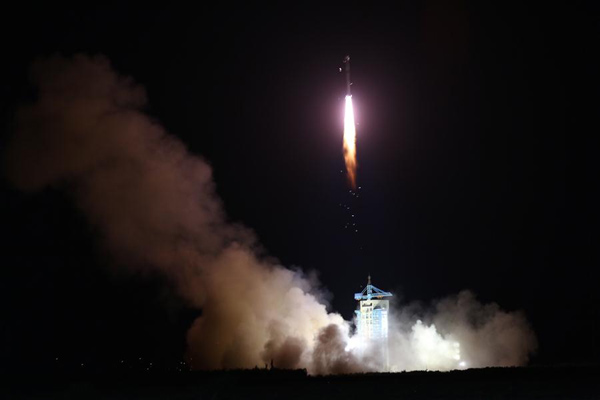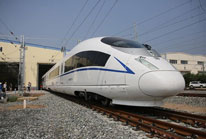


China launches the world's first quantum satellite on top of a Long March-2D rocket from the Jiuquan Satellite Launch Center in Jiuquan, northwest China's Gansu Province, Aug. 16, 2016. (Xinhua/Jin Liwang)
According to an Aug. 19 report by People's Daily, the University of Science and Technology of China (USTC) has made an important breakthrough in quantum research. For the first time, the importance of non-locality in quantum simulation has been demonstrated.
The research team, lead by Professor Li Chuanfeng from the university's Quantum Information Key Laboratory, developed a non-local quantum simulator to simulate the physics phenomenon of parity. The team's research has yielded a new direction for the quantum simulator. Renowned journal Nature Photonics recently published an account of the achievement.
On Aug. 16, China launched the world's first quantum satellite from the Jiuquan Satellite Launch Center; as a result, many people have been curious about the research behind this scientific achievement. The quantum simulator is a computer used to solve certain scientific problems. The concept was first proposed by Richard Feynman in 1981. In modern quantum simulator research, scientists generally focus on the simulator's ability to accelerate; the more quantum bits a simulator can manipulate, the stronger its computing power is.
The research by USTC has now revealed another important advantage of the quantum simulator: quantum non-locality, which Einstein once described as "spooky action at a distance." The non-local quantum simulator can be used to research subjects such as faster-than-light communications, which standard computers are unable to do.
 World's fastest bullet train to start operating next month
World's fastest bullet train to start operating next month Huangluo: China's 'long hair village'
Huangluo: China's 'long hair village' Spectacular bridge with one of the tallest piers in the world
Spectacular bridge with one of the tallest piers in the world Magnificent view of Hukou Waterfall
Magnificent view of Hukou Waterfall A glimpse of Stride 2016 Zhurihe B military drill
A glimpse of Stride 2016 Zhurihe B military drill US Navy chief tours Liaoning aircraft carrier
US Navy chief tours Liaoning aircraft carrier Chinese American woman wins Miss Michigan
Chinese American woman wins Miss Michigan Centenarian couple takes first wedding photos
Centenarian couple takes first wedding photos Traditional Tibetan costumes presented during fashion show
Traditional Tibetan costumes presented during fashion show Top 10 livable Chinese cities
Top 10 livable Chinese cities Top 20 hottest women in the world in 2014
Top 20 hottest women in the world in 2014 Top 10 hardest languages to learn
Top 10 hardest languages to learn China’s Top 10 Unique Bridges, Highways and Roads
China’s Top 10 Unique Bridges, Highways and Roads Celebrity split grips nation, triggers debate on marriage
Celebrity split grips nation, triggers debate on marriage Chinese fans of S.Korean pop culture stay loyal despite rumored ban
Chinese fans of S.Korean pop culture stay loyal despite rumored ban Is bronze good enough for Chinese fans?
Is bronze good enough for Chinese fans? Foreign actors in China share their experience dramatizing one-dimensional and stereotyped roles
Foreign actors in China share their experience dramatizing one-dimensional and stereotyped rolesDay|Week